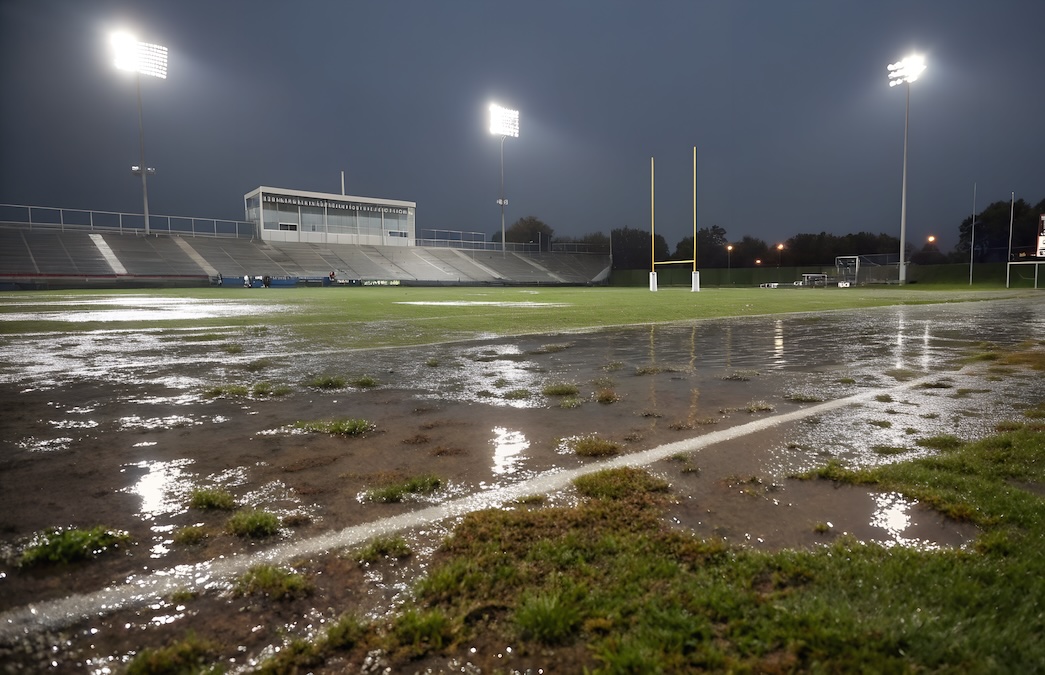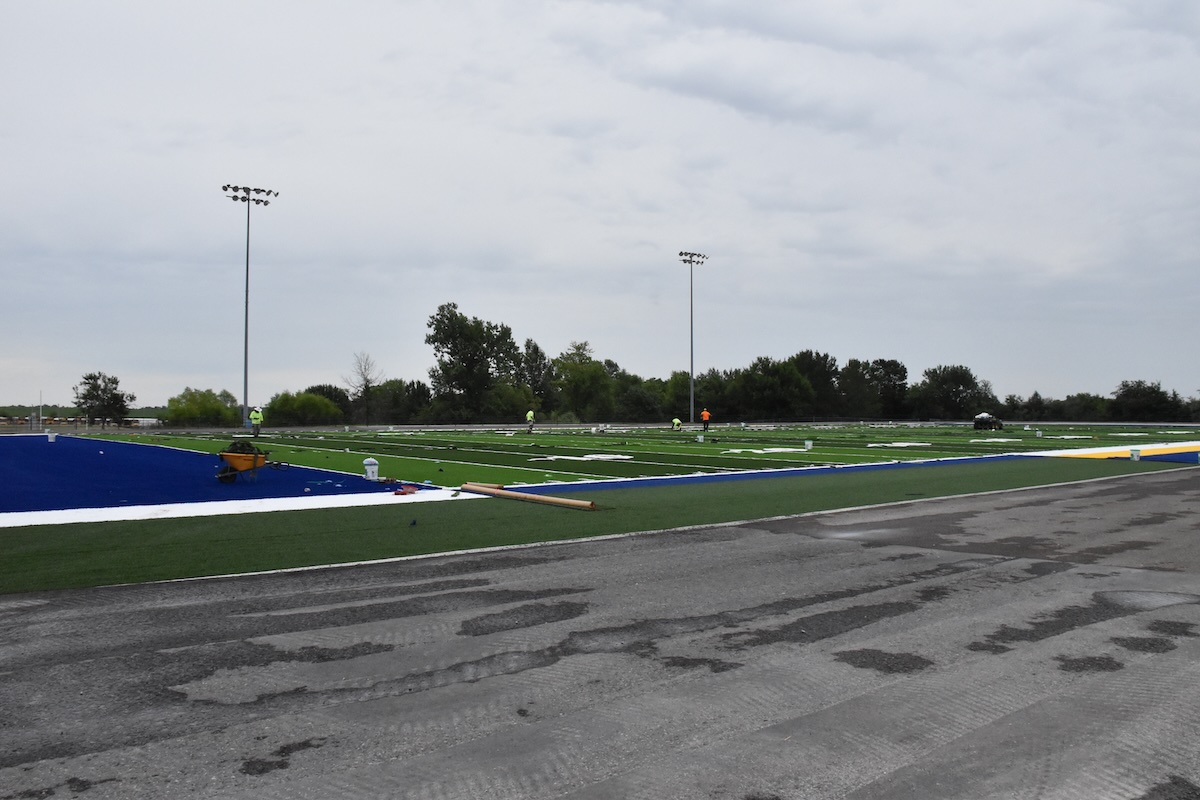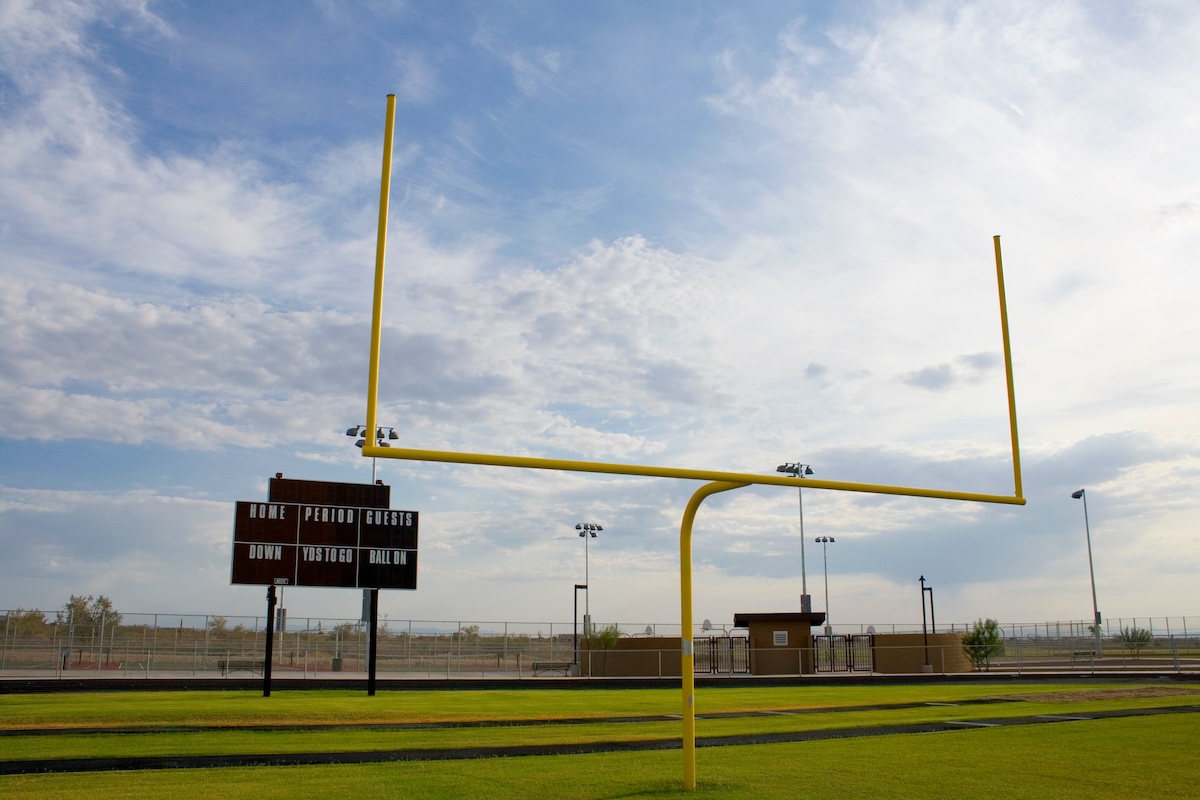Last Updated on June 27, 2025 by UDC Sports
When a school decides to upgrade its athletic facilities, few projects spark as much anticipation—or as many questions—as the decision to install an artificial turf field. It’s a bold investment in your school’s identity, the student-athlete experience, and local community pride.
Whether it’s a football stadium under Friday night lights, a soccer pitch hosting back-to-back tournaments, or a versatile multi-sport complex construction project, building a high-quality synthetic grass field promises fewer weather-related cancellations, dramatically reduced maintenance demands, and a sleek, professional appearance that can energize your entire athletics program and transform how your campus is perceived.
But before any turf rolls out or ground breaks, there’s a lot to understand about what actually goes into the sports field construction process.
What Every School Should Know Before Breaking Ground

Schools often underestimate how technical, timeline-sensitive, and site-specific turf installation is. That’s exactly why this guide was created: to equip school leaders, athletic directors, and facilities managers with some of the insights they need before a single shovel hits the ground. You can think of it as a quick roadmap through every phase of the project—from early-stage feasibility studies and stakeholder alignment to the final punch list and maintenance handoff.
Along the way, we’ll flag the missteps that tend to trip schools up—things like skipping soil tests, underestimating timelines, or overlooking local permitting hurdles. We’ll also cover drainage, subgrade prep, edge details, shock attenuation, logistics, and long-term value. Because when all these elements are understood and planned for early—before the field’s design and construction has begun—your school’s investment has a much better chance of paying off the way you hope it will.
Why Synthetic Turf? What School Leaders Are Really Buying
Before diving into construction specifics, it’s worth zooming out and understanding the “why.” Schools aren’t just buying turf—they’re buying year-round playability, reduced maintenance, and expanded scheduling opportunities.
Traditional grass fields are limited by weather, use frequency, and budget-intensive maintenance. With turf, the equation shifts:
- Play time increases: No mud-outs, no re-sodding, no need to rest the field after every rainy week.
- Maintenance costs decrease: Fertilizing, mowing, and irrigation are all either eliminated or drastically reduced.
- Versatility improves: Turf fields can be lined and configured for multiple sports, PE classes, band practice, and events.
But that value only comes from a properly constructed field. The benefits disappear if corners are cut or if the wrong specs are used from the start. That’s why everything below this line matters.
Step One: Pre-Construction Planning
This is where most school sports field construction projects either experience or avoid their biggest mistakes—before anything physical even happens. Good turf field construction doesn’t start with turf—it starts with site evaluation, permitting, layout planning, and stakeholder alignment.
Site Evaluation: More Than Just “Do We Have Space?”

Installing a turf field is a sophisticated process—it’s far more than simply laying down artificial grass. And because of that, the site has to meet a range of physical, environmental, and civil requirements:
- Soil suitability: Can the ground support the necessary compaction without excessive subsidence or water retention?
- Drainage capacity: Are you in a flood-prone area? Will runoff impact neighboring land or stormwater systems?
- Access for equipment: Will trucks, pavers, and base installers be able to access the site without excessive disruption?
Hiring a builder who conducts geotechnical testing and site analysis up front is not a luxury—it’s a necessity. Field failures due to poor drainage or settling almost always trace back to skipped steps here.
Permitting & Local Approvals
In most jurisdictions, installing a synthetic field—especially one that changes runoff patterns or adds lighting—will trigger local permitting requirements. That can include:
- Stormwater management plans
- Grading and site disturbance permits
- Environmental impact reviews
- Zoning approvals for sports lighting or public use
Working with a construction partner who’s handled these projects in your region before will save months of back-and-forth. Don’t assume your in-house staff can tackle this without outside help—it’s almost never worth the delay.
Site Work & Subgrade Preparation

Once the paperwork’s in place and the site is cleared for construction, the real groundwork begins. This is the hidden foundation that everything else depends on—and it’s where the skill of your builder makes the biggest difference.
Earthwork & Grading
The first physical stage is grading the field area to the right elevation and slope. For turf fields, that slope is often subtle but crucial—usually 0.5% to 1.0% to allow proper surface water runoff.
If the slope’s wrong, even the best turf system won’t help you. Puddling, infill migration, and premature wear can all result from improper grading.
Base Layer Construction
Beneath your synthetic turf, there’s usually a three-layer system:
- Compacted subgrade: The native soil, graded and compacted to the right density.
- Stone base: A mix of crushed stone designed to stabilize the surface and promote drainage.
- Optional shock pad: For added safety and performance (especially common for football and soccer fields).
The materials, thickness, and compaction rates for each layer vary by region and field use. A football field in Georgia might require completely different base specs than a multi-use field in Colorado.
That’s why you need a field builder who works with engineers and local soil labs, not just turf installers.
Drainage Is Everything
If there’s one takeaway from this entire article, let it be this: even the best sports fields will fail without proper drainage. And while the field pictured below is natural grass, not artificial turf, the same principle applies—water management is everything.

Even synthetic turf systems marketed as “fast draining” still depend on what’s underneath them. That’s where your drainage strategy comes in. There are two main components:
Subsurface Drainage
Perforated drain pipes are placed in trenches below the field’s base layers, sloped toward outfalls or collection basins. These intercept water that filters through the turf and base, keeping it from pooling or saturating the subgrade.
Surface Drainage
The field must also be crowned or sloped correctly to move surface water toward the sidelines or designated drains. Even “flat” fields are never truly flat if built right.
Failing to install both systems—or getting the slope and elevation calculations wrong—leads to flooding, freezing, turf damage, and unhappy players.
Choosing the Right Artificial Turf System

Once the groundwork is in place—literally—the next big decision is which turf system to install. Artificial turf is a layered, engineered surface, and each component affects performance, safety, longevity, and cost.
At a minimum, every synthetic turf system includes:
- A turf carpet (with fibers tufted into a backing)
- An infill layer (rubber, sand, organic, or a mix)
- A base system (aggregate layers, optional shock pad, and subgrade)
But there’s still a lot of room for variation within that framework. What your school chooses should depend on how the field will be used, how much maintenance you’re prepared to provide, and what your long-term goals are.
Monofilament vs. Slit-Film Fibers
Most turf systems today offer two main types of fibers: monofilament and slit-film.
- Monofilament turf fibers tend to look more like natural grass and are often used on fields where aesthetics and ball roll matter, like soccer.
- Slit-film turf is more durable and frays over time into a “grass mat” appearance. These are common when building school football fields because of their toughness under cleats and heavy use.
Many fields today use a hybrid blend of both, combining the softness and realism of monofilament with the durability of slit-film. This approach balances performance for multiple sports and extends the lifespan of the surface.
Infill Options
Infill is the material that’s brushed into the turf blades to help keep them upright, provide cushioning, and add ballast. It also affects field temperature and playability.
Here are the most common infill types:
- Crumb rubber: The standard option for decades, made from recycled tires. It’s economical and well-tested but can retain heat.
- Coated rubber: Similar to crumb rubber but coated in acrylic or other materials to reduce odor and improve durability.
- Sand or silica: Often used as a base layer under rubber to help with weight and compaction.
- Organic infills: Made from coconut husk, cork, or walnut shells. These stay cooler but cost more and may require more maintenance.
- TPE and EPDM: Thermoplastic elastomers and rubber alternatives that offer more consistent sizing and lower heat retention.
The right infill depends on your goals—football may prioritize impact attenuation, while soccer may care more about consistent ball roll. And for schools where student safety and public perception matter, organic or coated alternatives are increasingly popular.
Shock Pads and Safety Layers
While not mandatory, shock pads are becoming more common—especially for K-12 schools where player safety is a top priority. These are foam or rubber pads installed between the stone base and the turf, designed to absorb impact and reduce concussions.
Shock pads:
- Can improve G-max ratings (a measure of impact force)
- Help maintain field performance over time as infill settles
- May be required by insurance or district safety policies
While they increase upfront costs, shock pads can extend the lifespan of the turf and reduce maintenance needs, making them worth considering—especially for football or high-traffic fields and stadiums.
The Installation Process: What to Expect On Site

Now we’re getting to the visible part of the project—the actual field construction that students, faculty, and families start to notice. While the specific process can vary based on vendor, location, and design, most synthetic turf installations follow a series of predictable steps.
Turf Rolls and Layout
The turf arrives on site in large rolls, often 15 feet wide and over 100 feet long. These rolls are carefully laid out across the prepared base following the field’s design layout.
At this stage, the crew:
- Aligns turf panels to ensure consistent fiber direction
- Trims edges to match field contours and boundaries
- Preps for seams, hash marks, logos, and inlaid lines
Turf installation isn’t just about coverage—it’s about precision. Logos and field markings are often inlaid, meaning the shapes are cut out of the base turf and replaced with a different color roll. This prevents peeling, fading, or wearing like painted lines would.
Seaming and Bonding
Once the rolls are positioned, installers join them using a combination of seaming tape and specialized turf adhesive. Seams must be level, tight, and invisible from a playing perspective.
Poor seams lead to trip hazards, visible lines, and long-term performance issues. This is where experience matters—your builder’s attention to detail here will directly impact your field’s durability.
Infill Installation
After the turf is fully laid and seamed, the crew applies infill in multiple passes using spreaders and grooming equipment. The infill is brushed down between fibers to provide stability and cushion.
It’s not dumped in all at once—each layer is groomed and compacted to ensure even coverage and prevent low spots. Depending on the infill type and target depth, this phase can take several days.
In some cases, field testing is performed during or after infill installation to confirm G-max ratings and surface consistency meet safety standards.
Final Grooming and Punch List
Once the infill is fully applied and the field is brushed to an even, upright appearance, the contractor will typically walk the site with school officials for a final punch list. This is your chance to identify any touch-ups, cleanup, or additional work that needs to happen before handoff.
From there, the project team will usually provide:
- A maintenance plan and grooming schedule
- Warranty documents and care instructions
- Training for school staff (if applicable)
And that’s when it happens—your school takes ownership of a finished, high-performance synthetic turf field.
Post-Installation: What Happens After the Field Is Built

With your new turf field officially installed, lined, and handed off, it might feel like the heavy lifting is over—and in many ways, it is. But there are still a few important steps that follow installation, and how your school handles the post-construction phase can determine how well the field performs and how long it lasts.
This is where ownership truly begins. You’re no longer in project mode—you’re now in performance and preservation mode.
Maintenance Planning
A common misconception is that synthetic turf is “maintenance-free.” It’s not. It’s lower maintenance, but neglect can shorten its lifespan, void warranties, and create safety hazards.
Most school turf field builders will provide a recommended maintenance schedule, which usually includes things like:
- Brushing/grooming the turf: Keeps fibers upright and evenly distributes infill. Frequency depends on use—weekly or biweekly is typical during peak seasons.
- Infill top-offs: Over time, infill levels settle and migrate. Some areas—like goal mouths or midfield—will need more frequent attention.
- Spot cleaning and debris removal: Especially after games or events, to prevent buildup and maintain aesthetics.
- G-max testing: Regular safety testing, usually annually, to ensure the field still meets impact attenuation standards.
- Weed and moss control: Edges and seams may occasionally require treatment to keep unwanted vegetation at bay.
A well-maintained synthetic field can last 8 to 12 years, depending on usage volume and climate. Schools that stick to a consistent plan often get several additional years of service before needing a replacement.
Warranty & Support
A typical synthetic turf system will come with a manufacturer’s warranty of some type, often ranging for a number of years. Make sure your school receives:
- All warranty paperwork from both the turf manufacturer and the installer
- Clear documentation of field testing results at handoff
- Contact information for future support and inspection services
Understanding what’s covered—and what’s not—is critical. Warranties often don’t cover damage from acts of vandalism, misuse, or improper maintenance. In some cases, failure to document annual grooming or testing can void coverage altogether.
That’s why it’s a good idea to designate a facilities staff member or coach as your “field steward”—someone responsible for tracking care logs, communicating with your turf partner, and keeping maintenance on schedule.
Preparing for the Next Decade

While your synthetic field may look flawless now, long-term success means thinking ahead. The best time to plan for end-of-life replacement is immediately after install, while all specs, materials, and vendors are fresh in your system.
Consider:
- Photographing the install (layers, base, pad) before turf is fully in place for future reference
- Storing extra turf rolls and paint-matched fibers/logos for future patch repairs
- Logging infill types and volumes for reorder or top-off planning
- Budgeting now for 8–10 years down the road—either to replace turf or refresh lines/logos
Some schools even roll a “field reserve fund” into their annual budget starting year one. That way, when replacement time comes, it’s not a scramble—it’s a scheduled upgrade.
Synthetic vs. Natural Grass: The Long-Term Value Conversation
It’s worth closing this guide by zooming out and taking a look at the big picture—why schools move to turf in the first place, and how artificial turf compares to grass from a cost and usability perspective.

Just glance at the image above: a green grass field being irrigated under blue skies. It’s beautiful, yes—but also a visual reminder of the labor, water, and ongoing maintenance that natural turf demands. From mowing and fertilizing to irrigation and seasonal rest, grass fields require constant attention—and even then, they’re often no match for heavy usage or unpredictable weather.
A synthetic field, on the other hand, shifts that entire equation. It offers year-round reliability, dramatically expanded usage hours, and lower long-term upkeep—especially for schools juggling multiple sports, tight schedules, and limited field space. It’s not just about aesthetics or convenience; it’s about performance, access, and making the most of your investment every season for years to come.
Upfront vs. Lifecycle Cost
- Natural grass fields are cheaper to build—but cost more over time. Between irrigation, mowing, fertilizing, re-seeding, aeration, and resting the field, annual upkeep can be considerable.
- Synthetic turf fields cost more to install, but require less maintenance and deliver more playable hours per year—especially in wet or heavily used regions.
Over a 10–12 year period, many districts find that synthetic fields offer comparable or even lower total cost of ownership—especially when factoring in fewer cancellations, increased facility rentals, and less maintenance labor.
Usage Volume

The biggest win for most schools is the ability to maximize field use without destroying the surface. With natural grass, heavy use means early deterioration. With synthetic turf, fields can support:
- Morning PE classes
- After-school practices
- Evening games
- Weekend tournaments
- Band practice, summer camps, and events
No rest days. No “field closed” signs. That kind of reliability changes how an athletic program operates—and often pays for itself through expanded participation and community engagement.
Weather Resistance
Turf athletic fields drain faster, play drier, and bounce back from rainfall in ways grass simply can’t. In climates with heavy rain or freeze-thaw cycles, turf ensures the field is playable when you need it most.
If weather-related cancellations are a regular headache in your district, a synthetic surface can provide consistency and peace of mind.
School Sports Field Construction: Build It Right, From the Ground Up

Installing a synthetic turf field is a major milestone for any school. It’s a statement of investment in students, athletics, and community spaces. But it’s also a complex construction project—one that requires informed planning, capable partners, and a long-term mindset.
If there’s one lesson this guide reinforces, it’s this: the success of your field doesn’t come down to what brand of turf you choose—it comes down to how well it’s built, how well it drains, and how well it’s maintained. So start smart, build with purpose, and you’ll get a field that earns its value every season, year after year.


